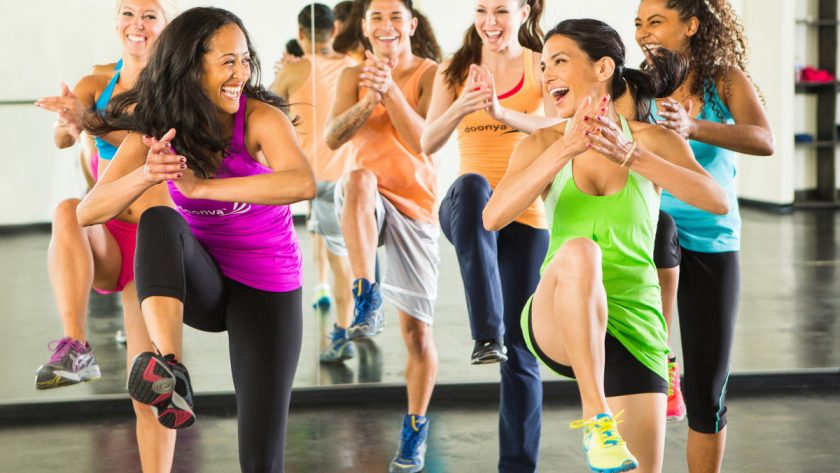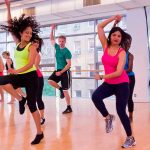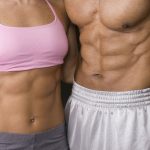When hearing the keyword “Aerobics” , many initially think of the 80s, when Jane Fonda marketed her aerobics workout and encouraged countless aerobics programs on television to take part.
But the days of brightly colored, tight bodies & leggings, neon pink cuffs and headbands are (luckily) over.
Aerobics , on the other hand, is still popular, which i.a. the fitness trend Zumba has proven. So it’s high time to take a closer look at the fitness sport.
What exactly is aerobics? How did the fitness trend come about? And what types of aerobics are there?
These questions and many other questions about aerobics should be answered in a series of articles! In this first part, the history of the development of aerobics is described before aerobics in all its diversity is explained (partly with videos).
What is aerobics?
Aerobics is a dynamic and extremely versatile fitness training .
It is a mixture of gymnastics and dance in which rhythmic movements to motivating music are performed in a group.
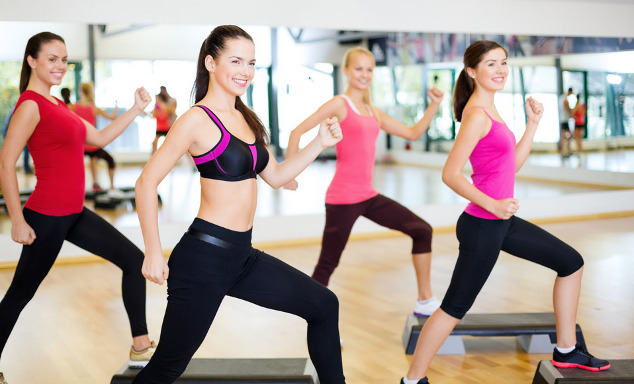
Aerobics – dynamic fitness training with motivating music
A classic aerobics lesson consists of four phases together: warm-up (warming up), cardio part (cardiovascular training, fat burning), cooldown (cooling down), stretching & relaxing.
The exercises are usually Choreographed and presented by trained aerobic trainers . The trainers use communication techniques that are widely used in the aerobics scene, which are also known as ” cueing “.
“Cues” are verbal and non-verbal instructions which the participants should use to complete the planned choreographies or exercise content in sync with the music. In addition to facial expressions and body language, the cues used in aerobics primarily include announcements, standardized gestures and the display of directions and rotations.
The aerobics trainer is in constant communication with the group , so that, ideally, the participants always know what to do and when.
The challenge for the trainer is to convey the training content through optimal cuing in such a way that movements run in harmony with the music used. A complete choreography can be taught without interrupting the flow of movement.
However, an aerobic workout does not necessarily have to contain a choreography, but can also “unchoreographically” convey simple sequences of movements.
On the other hand, complex choreographies with complicated movement patterns , varying spatial paths, rotations and high speed can also be used. How demanding the aerobic training is depends on the performance level of the target group.
The demands on the aerobic trainer are high in both cases. On the one hand, he has to ensure that the participants are cued in good time and motivate the group. On the other hand, he must perceive and correct errors in parallel.
A good aerobics trainer is therefore for one efficient aerobic training is essential.
How did aerobics come about?
Aerobics has its origins in the 60s . At that time, the American sports doctor Kenneth H. Cooper developed aerobic training to strengthen the heart and lungs.
The Cooper Aerobic Center named after him was opened in Dallas in the 1970s. Cooper was instrumental in the spread of preventive health sports in the USA, in which endurance training was integrated into gymnastics programs .
In America it triggered a veritable fitness boom, which achieved its worldwide breakthrough in 1982 when Jane Fonda marketed aerobics as her gymnastics principle. Aerobics became very popular, especially with younger women.
From 1983 onwards, ZDF broadcast the popular aerobics program “Enorm in Form” in this country, which animated TV viewers to participate in front of the screen. Here is a small sample from the colorful 80s:
Europe in particular still has a distinctive and established aerobics scene that has greatly developed the sport. Today there are e.g. significantly more dance elements in the advanced aerobics classes.
What types of aerobics are there?
There are now a multitude of variants of the power sport aerobics, each with their own focus and training goals developed.
Many aerobics variants contain elements from other sports, such Martial arts, yoga and dance. There are limits to the imagination when it comes to designing the aerobics choreographies, so that new fitness trends with aerobics as a component continue to emerge.
In some aerobic variants, aids such as the slide board and special aerobic dumbbells are also used.
Aerodance:
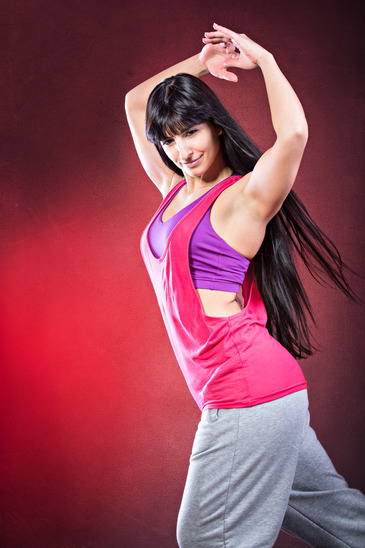
Aerodance is a harmonious aerobic training at an advanced level with dance choreography.
The endurance training and the strengthening of the cardiovascular system are in the foreground. In addition, the coordination skills and the sense of rhythm are promoted and the muscles are strengthened.
Classic aerobics basic steps and arm combinations from street dance, hip hop, modern, jazz, raga, Latin or current hits are put together to form a choreography.
Aerodance is suitable for everyone who has prior aerobics knowledge and fun dancing .
Aqua aerobic:
Aqua aerobics is aqua fitness with aerobic elements . This aerobic variant is fitness-oriented, but also easy on the joints , as it takes place in water.
The whole body training takes place either in shallow water at chest height or in deep water. Often, aids such as special dumbbells, water boards, swimming noodles, kick boxing gloves, etc. are also used.
Aqua aerobics not only train arms, legs, bottom and trunk, but also increase strength, flexibility and endurance and promote relaxation. The water buoyancy and the water resistance relieve the joints and at the same time muscle strength and endurance are promoted.
BallKoRobics:
BallKoRobics is coordination and conditioning training with music and ball , which is combined with elements from aerobics.
BallKoRobic was developed by the teacher and youth soccer trainer Peter Schreiner, who first tried out aerobic elements in 1998 with the ball, the favorite exercise machine for many boys. The aim of the exercises and movement sequences was, among other things the fine-tuning of athletic movements in connection with the ball .
BallKoRobic also promotes coordination skills , the interaction of arms and legs and a sense of rhythm. In addition, the training improves the endurance , the strength (especially of the leg muscles), the dexterity of the hands and peripheral vision (especially when using several balls or group or group) when performed for a longer period of time (over 20 minutes) Partner exercises).
BallKoRobics is very suitable for physical education and use in football . Since the sport is not dancing, but rather has to do with ball movements, bouncing and dribbling, Ballkorobics also motivates boys to try out athletic movements to music.
Bodyattack:
Bodyattack is a cardio workout that combines athletic aerobic movements with strength and stabilization exercises.
The training goals consist of building endurance and strength . On the one hand, Bodyattack improves general fitness and endurance, as well as coordination and mobility. The highly energetic interval training increases the cardiopulmonary capacity as well as high calorie consumption .
In addition to full-body cardio training, Bodyattack gives more strength through core conditioning work and strengthens the bones.
Body Balance:
Body balance is one modern mix of yoga, pilates and tai chi . It is a pre-choreographed group exercise program that combines body movements from Asia with new techniques.
With Body Balance, body, mind and soul are brought into harmony in order to create an optimum of holistic awareness . The aim is to promote flexibility and strength, which gives a centered and calm feeling.
During the training, flexibility, balance and core stability are harmoniously combined with moments of rest. The course is structured in such a way that breathing and movement, tension and relaxation, awareness and concentration are in harmony.
The focus of the training program is the continuous and permanent optimization of physical fitness, health and weight . On the one hand, Body Balance increases the basic strength and improves joint flexibility, the range of motion and the cardio-vascular functions . On the other hand, the mind is sharpened, the consciousness is strengthened, the stress level is reduced and the feeling of long-lasting well-being and calm is conveyed.
There are no age barriers , nor does the fitness background play a role in Body Balance.
Bodycombat:
Bodycombat (Combat in German = fight) is a powerful cardio workout that is combined with exercises and movement sequences from various martial arts or self-defense types.
For example, classic aerobic exercises are combined with new elements such as music or martial arts (e.g. tai chi, taekwondo, karate and kickboxing).
Training goals are the strengthening of the entire body muscles and improving endurance. First and foremost, the main muscle groups are trained and shaped. In addition, the training improves heart and lung function, as well as coordination and mobility .
Since Bodycombat involves a large number of different movements, the training uses all muscle parts in the body .
BodyPump:
The BodyPump is an intensive barbell program for strengthening, shaping and toning the entire body. The focus is on movements with high repetition rates and low weight loads.
The mix of music, trained instructors and personal weight selection should bring the desired results. With the BodyPump, all main muscle groups (legs, chest, back, shoulders and abdominal muscles) are exercised with selected weight exercises, e.g. Squats, presses, lifts and curls are trained.
The high number of repetitions keeps the pulse in the performance range . Training goals are the improvement of general fitness, as well as strong, but still athletic body muscles .
Bodytoning:
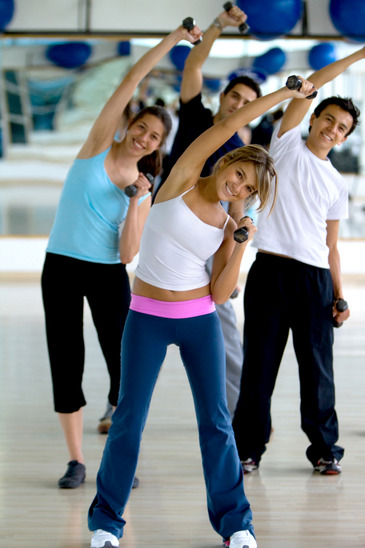
Bodytoning consists of endurance training with simple aerobic basic steps and a strengthening part . The difference to classic aerobics courses is that there is no coordination training.
In addition to endurance, the focus of body toning is on strengthening the muscles. Basically, the entire body should be brought into shape. However, many courses in the field of body toning also specialize in problem areas (e.g. stomach, legs and buttocks).
Often there are also aids, such as small dumbbells, Theraband, tubes and Co. come into play. This makes the exercises even more intense and the different parts of the body are shaped and strengthened even more purposefully.
Bodyvive:
Bodyvive is a combination of cardio and resistance training . The group fitness program is a so-called low-impact workout with variable intensity .
In addition to aerobic elements for cardiovascular fitness , resistance training is also used for strength and stability.
In addition to improvement in muscle strength and endurance, Bodyvive provides more mobility, a higher range of motion, and better balance and posture .
Improvement of muscle strength and endurance
A rousing choreography is used for training. Optional aids such as balls, tubes and hand weights provide more variety during your workout.
Bodyvive is suitable for everyone who enjoys group fitness and is ideal for fitness beginners as well as active adults from 40 .
Box aerobics:
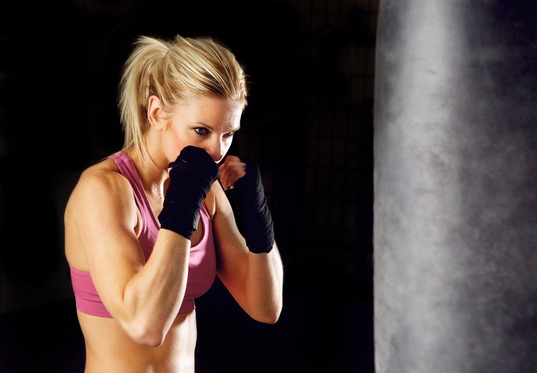
Box Aerobics is a sweaty full body workout , which is supplemented by (simple) punching and stepping techniques from boxing.
The training demands practically every muscle group, improves endurance, speed and strength , reduces aggression and strengthens the psyche. Coordination and physical condition are required here to a greater extent.
Box aerobics is very similar to Tae Bo, but is much more strenuous because it contains lots of jumping and jumping elements . The aerobic influences are also much more pronounced. The exercise techniques are borrowed from boxing, but adapted to aerobic training.
In addition to stamina, coordination and flexibility, the Arm and upper body muscles trained . This is due to boxing elements such as straight punches with the punching hand, uppercuts, the cross, straight lines with the leading hand (jab), the sideways and chin hook.
In combination with numerous jumping units, box aerobics is an intensive sports program that, in addition to physical fitness, particularly stresses the leg, arm and upper body muscles.
But boxing aerobics is not just conditioning and muscle training, it also trains responsiveness and body control . The playful fight also promotes characteristics such as determination, assertiveness and self-confidence.
Dance aerobic:
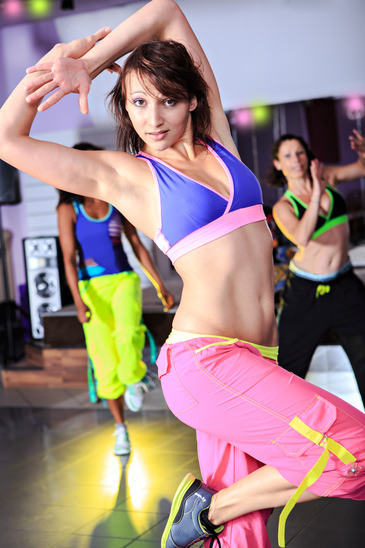
Dance Aerobics is an aerobics variant for sports and music fans . The motivating and aerobic endurance training is all about creativity, fun and rhythm.
During the exercises, classical dance elements from the respective musical styles are integrated into the aerobic training. South American sounds such as salsa, samba and latin are particularly popular. But dance aerobics can also be found in dance elements from jazz and hip-hop.
Often throw choreographies for beginners and advanced offered. While no previous knowledge is necessary for the beginner courses, you should have at least basic experience in aerobics for the advanced courses.
Fit Kick:
Fit kick or “fitness kick” or “kickboxing arobic” is a combination of martial arts, aerobics and rousing music . The trend sport originally comes from the USA.
Movements from boxing or kickboxing are combined with aerobics and dancing to form a simple choreography. The motivating and sweaty power workout takes a lot of strength: the legs are constantly in motion, while the upper body is active.
This makes Fit Kick an optimal all-round training for the entire body. On the one hand, the exercises serve to build performance. In addition to endurance and speed, the entire cardiovascular system is strengthened. On the other hand, the muscles, coordination, flexibility and physical banality are promoted.
Fit Kick or kickboxing aerobics is ideal for reducing stress and aggression and increases motivation and self-confidence.
Hip-hop-aerobics:
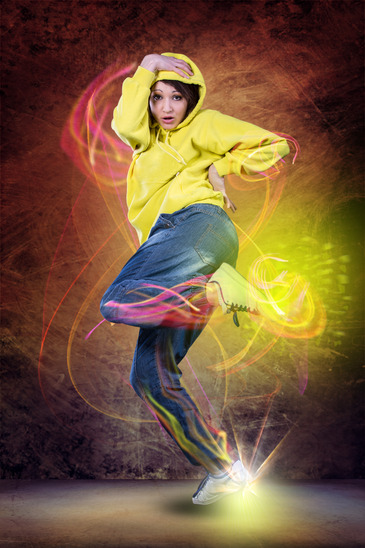
Hip-hop aerobics is a dance-like full-body workout that combines dance movements with strengthening exercises. Above all, endurance is trained.
Hip-hop aerobics was developed to make the workout feel more like a dance than just exercising. Normally you train to faster tempo hip-hop music , whereby the typical moves in hip-hop style are also used.
The goal of hip-hop aerobics is not to learn strict sequences of movements and improve performance. Nevertheless, hip-hop aerobics is good cardiovascular workout , improves posture, trains muscles in the arms, legs and abdominal area and strengthens the back.
Most of the movements in hip-hop aerobics are derived directly from the dance style of the same name. Hip-Hop is an American dance style with elements from African, Latin American and traditional Asian dance styles. The steps are usually very fast, while the dance moves are expressed through elements like twists, headstands and arm waves .
In hip-hop aerobics, the main goal is usually to make repetitive hip-hop movements to exercise and build up the muscles. The trainers usually incorporate a lot of dance moves into the exercise so that you feel like you are in a dance class or night club instead of a fitness class.
Cool hip-hop music adds to the atmosphere during training.
Martial arts aerobics:
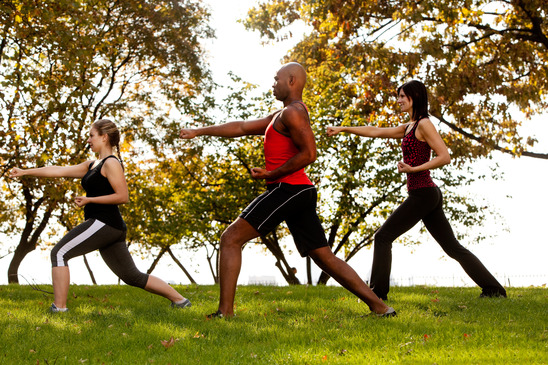
The umbrella term martial arts aerobics describes a aerobics program with integrated martial arts elements . One could describe this aerobics direction as a mixture of Jackie Chan and Jane Fonda.
In addition to classic boxing, martial arts elements from Thai boxing, Kung Fu, Taekwondo or other Asian martial arts are often incorporated. Typical martial arts aerobics are e.g. Bodycombat, Tae Bo and Fit Kick .
The fast exercise of the individual martial arts elements contributes to the improvement of strength, speed, as well as coordination and responsiveness. Martial arts aerobics releases a lot of energy. With the exception of classic strengthening exercises such as push-ups, the training is almost always done while standing. The exercises are often very quick and correspondingly strenuous.
Martial arts aerobics is good full body workout because it not only strengthens the body, but also trains endurance. Also the thought from the Asian martial arts to consider the body as a unit and to bring it into harmony is to be assessed positively. Many gymnastics offers only target individual muscle groups.
Nevertheless, you should have a certain basic fitness , a good sense of balance and coordination skills for the training. The danger of putting wrong strain on the joints is great with the fast and powerful movements. Obese and high blood pressure patients it is better to use gentler sports.
Kick Power:
Kick Power is an aerobic training form consisting of aerobic and various martial arts elements such as Taekwondo, karate and kickboxing. This powerful sport originally emerged from Tae Bo, the roots of Kick Power are in the USA.
Depending on the level of difficulty, the kick power training includes the basic techniques, combinations and strengthening exercises with or without the aid of various aids. Kick and punch techniques from the martial arts sector (e.g. karate and kickboxing) are combined to rousing music.
Kick Power mainly trains the cardiovascular system. Kick Power provides more stamina, coordination and speed , whereby dynamics, strength and balance are also improved. Other positive side effects of aerobic training are more agility, the reduction of stress , the strengthening of the core muscles and more flexibility.
Kick Power is suitable for young and old alike. Active athletes are also challenged, as the whole body is involved in training. Since Kick Power does not contain dance elements, but only light choreographic elements , this type of aerobics is also popular with men.
Salsa aerobics:
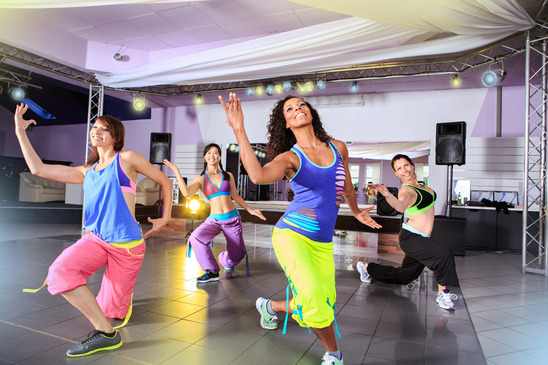
Salsa aerobics is a mixture of dance and aerobics in which specific South American dance elements are integrated. The combination of lively Latino rhythms and lively and flowing movements convey exoticism, emotions, fun and joy of movement.
The salsa aerobics training program consists of strength and endurance exercises, relaxation techniques and gymnastic exercises. Compared to other dances, salsa can be danced in any direction. Short steps with clear hip movements to Latin American music dominate.
The training strengthens the parts of the body that are important for stability and flexibility . Salsa aerobics primarily strengthens the abdominal and back muscles and shapes the hip and leg muscles. In addition, coordination and stamina are improved and fat burning is promoted.
Salsa aerobics is ideal for people who enjoy Latin American music and rhythmic body movements.
Sen Fi:
Sen Fi is the abbreviation for ” Sensual Fighting “, which translates as ” sensual fighting ” in German.
The workout is a mix of aerobic exercises and martial arts elements , performed to music from the Far East. The specialty of Sen Fi: The exercises are performed in three-quarters time of Polynesian music .
The rhythms of the traditional South Sea sounds and ritual dances provide a calm speed . It is precisely this three-quarter time that gives the Far Eastern-inspired aerobics variant – compared to the otherwise usual four-quarter time – that certain something special.
Sen Fi is a calm, but at the same time powerful trend sport, which promotes endurance and fat burning. The secret of success lies in the alternation of tension and relaxation of the muscles. In addition to the aerobic steps, martial arts exercises from Kung Fu, Wing Tsun, Haka and Qi Gong are combined. Kicks and boxing movements stimulate the muscles and increase fat burning.
The movements are accompanied by meditative elements, breathing techniques and methods from yoga. To relax the muscles, stretching and stretching exercises are provided. Training breaks lower the pulse again.
The combination of aerobic exercises, fighting techniques and soothing relaxation phases make Sen Fi a contemplative all-round wellness program with musical accompaniment from the Far East.
The Asian aerobics in three-quarter time with its meditative movement sequences is particularly suitable for beginners and older people. The endurance training takes place in the low pulse range, and the movements are carried out calmly and without hectic .
Sen Fi is gentle on the cardiovascular system, stimulates fat burning and offers the ideal feel-good combination of endurance training and relaxation technique .
Slide aerobic:
Slide aerobics is an aerobics variant in which the exercises on a so-called. Slide Board (slide = sliding) can be exercised. The board is a two-meter-long rubber mat on which gliding or sliding movements are made with the feet while standing.
The training consists of sliding back and forth on smooth ground, accompanied to the rhythm of the music. Different speeds can occur.
There are stoppers at the ends of the mat that you can use to push yourself from side to side. The feet always stay on the ground.
In slide aerobics, parts of the body from the buttocks down are mainly challenged, as the exercises usually be executed bent. This specifically trains the typical problem areas of women, such as legs, buttocks and thighs .
Slide aerobics ensures strong muscles and is easy on the joints and back. However, since it is a rather strenuous aerobics variant that requires a lot of physical activity, the training is not for beginners .
Step aerobics:
Step aerobics is a joint-gentle endurance and coordination training that was developed by the American fitness trainer Gin Miller. The exercises are carried out with the help of a height-adjustable platform. The special training bench (stepper) should be non-slip on the floor.
Step aerobics is a whole body workout. Getting on and off the stepper uses buttocks and leg muscles . The arms are also increasingly brought in during step aerobics and thus trained.
Thanks to the flowing and natural sequences of movements, step aerobics is gentle on the joints and strengthens the cardiovascular system. The intensity of the workout can be adapted to the individual condition by increasing the stepper or faster step sequences. Step aerobics is therefore suitable for both beginners and advanced users.
Tae Bo:
Tae Bo is a fitness sport that uses aerobics, dance, and Asian martial arts techniques to a sweaty full-body workout.
Training goals are to improve circulation, muscle endurance and strength and flexibility.
The inventor of Tae Bo is the American karate champion Billy Blanks . Tae-Bo courses are now being offered with great success in fitness studios around the world. Since the name “Tae Bo” is protected by trademark law, similarly structured fitness courses run under designations such as ” Tai Bo “, ” Thai Bo “, ” Tae Fit “or” Thai-Fit “.
The workout is usually practiced to faster and more motivating music. Martial arts techniques such as punches, kicks and fights are combined with additional techniques to create a sequence of movements. Even if martial arts techniques flow into Tae Bo, it is not a pure martial arts or a self-defense technique, but pure fitness gymnastics .
Advantage: Compared to martial arts Tae Bo is relatively easy to learn . However, a precise technique is required, as the movements are carried out purposefully and powerfully in order to achieve high body tension. An intensive, properly performed Tae Bo workout is one of the most strenuous fitness sports of all.
Taiwado:
Taiwado is a complete full-body sport based on Asian martial arts and martial arts elements , combined with elements from the western world. “Taiwado” is an internationally registered and protected trademark. The training system was developed by the longstanding martial arts expert Rudi Kaufmann .
In addition to basics from Asian martial arts such as karate, taekwondo and ju-jitsu punching and thrusting techniques, boxing and kickboxing techniques , as well as parts from aerobics from the fitness area a.
In Taiwado there is no prescribed choreography and therefore no prescribed processes. Interesting movement sequences and modern music make the training varied and prevent boredom.
The main goals of the training are to promote health, strengthen body, soul and spirit , as well as increase social cohesion. Taiwado is suitable for young and old and can be operated with practically no restrictions. Due to the easy-to-learn structure in technology, you will achieve a good condition within a very short time.
Therarobic:
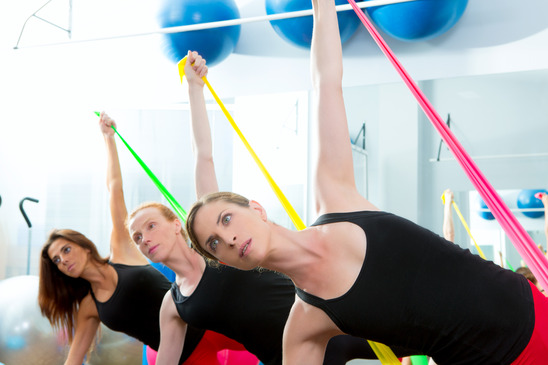
During a therarobic workout, elastic latex or rubber bands (so-called thera bands) are placed around hands, wrists or feet. Nevertheless, there is always sufficient freedom of movement. The aerobic-like exercise is a low-impact form in which one foot stays on the ground at all times.
The slight resistance activates and tightens the muscles in the arms and legs. Therarobics has an effect similar to strength exercises , but is far less strenuous. The constant resistance also leads to several muscle groups being addressed at the same time .
The training bands are available in different lengths and tensile forces, which should be selected carefully. The movements with the Theraband are performed slowly and evenly .
Therarobics provides muscle strengthening and joint protection and is suitable both as cardiovascular training and to reduce excess weight.
Zumba:
Zumba combines aerobics with Latin American and international dances. “Zumba” is a protected trademark. The fitness concept was created by the dancer and choreographer Alberto “Beto” Perez in Colombia in the 1990s.
The Zumba choreography combines a.o. Elements from dance styles such as hip-hop, samba, salsa, merengue or belly dance.
Zumba does not work with the classic counting of bars, but follows the flow of the music with repetitive movements.
Unlike classic aerobics, Zumba doesn’t have a non-stop beat. The movements are also not standardized.
Each song receives its own choreography according to its characteristics and dance style. In Zumba, the dance steps of the respective music style within the choreography are combined with aerobic elements such as lunges and squats.
This increases the degree of stress .
Instead of performance, Zumba focuses on fun with music and creative movements . The participants should follow their inner rhythmic sensibility and adapt this increasingly better to the given choreography. Instead of adjusting the dance steps to the beat of the music, you simply follow the music with repetitive movements.
Nonetheless, Zumba is a demanding full body workout g. Targeted figure-shaping exercises and endurance training stimulate fat burning. In addition to strengthening your arms, abdominal muscles, buttocks and thighs, Zumba also improves your sense of rhythm.
Since Zumba is based on simple steps, it can be learned quickly even without prior knowledge . In addition to the standard version, various modifications are now available (e.g. ” Zumba Gold ” for inexperienced and senior citizens or the joint-friendly version ” Aqua Zumba “).
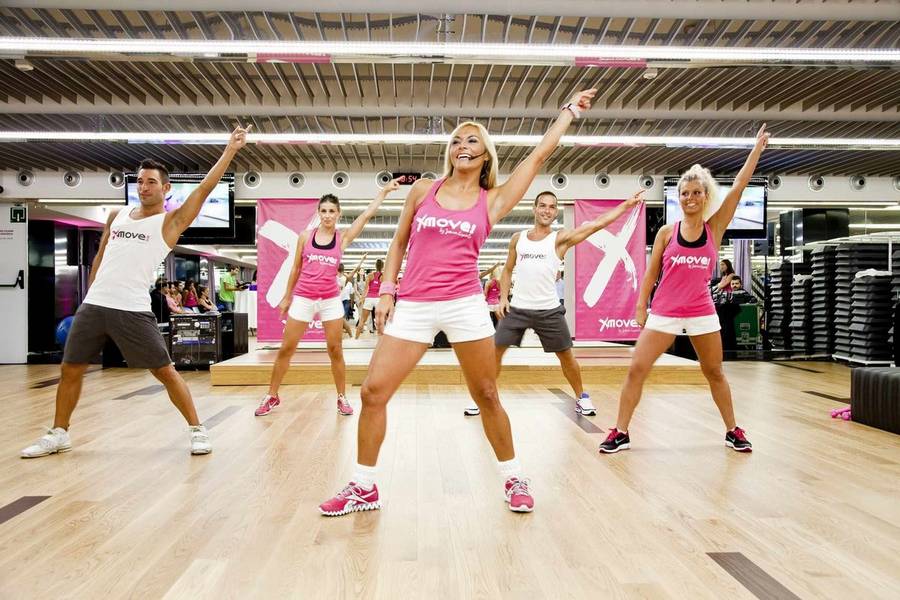
Conclusion & Outlook
As the different types of aerobics show that this fitness sport is much more than a passing trend from the 80s.
Aerobics is established and is constantly developing. From A for aqua aerobics to Z for Zumba everyone will find an aerobic workout to suit their taste.
With the numerous types of aerobics you are guaranteed not to be bored. But aerobics can do even more, e.g. regarding the training intensity !
E.g. the load in the step patterns can be varied (keyword: ” Low Impact ” and ” High Impact “). And those who want to improve their fitness with aerobics can choose between the continuous method and interval method .
Last but not least, the question arises: How high is the calorie consumption during aerobics ?

